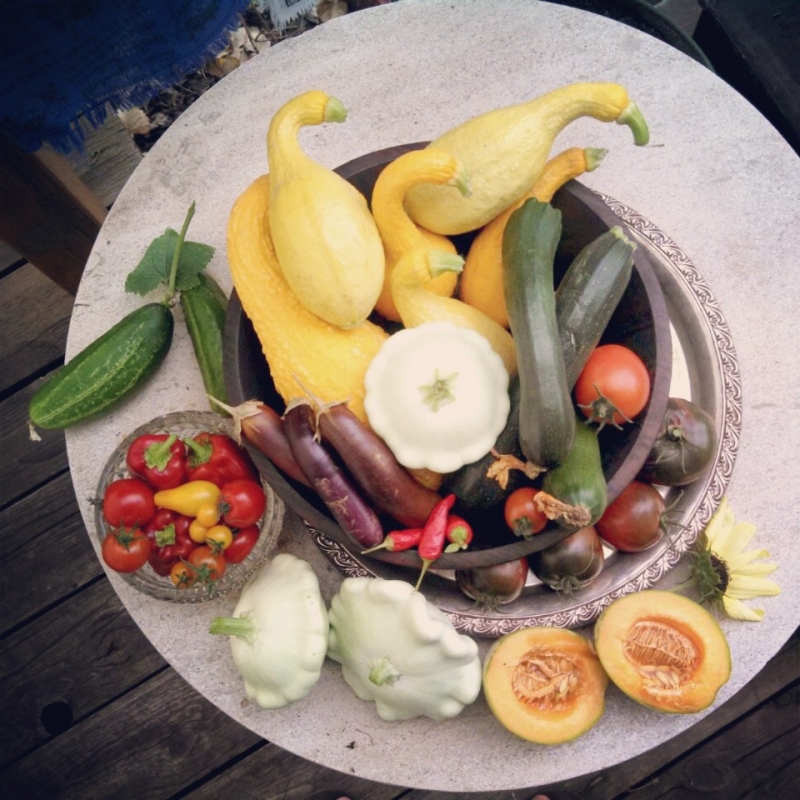Well Did You Ever Make Colcannon…
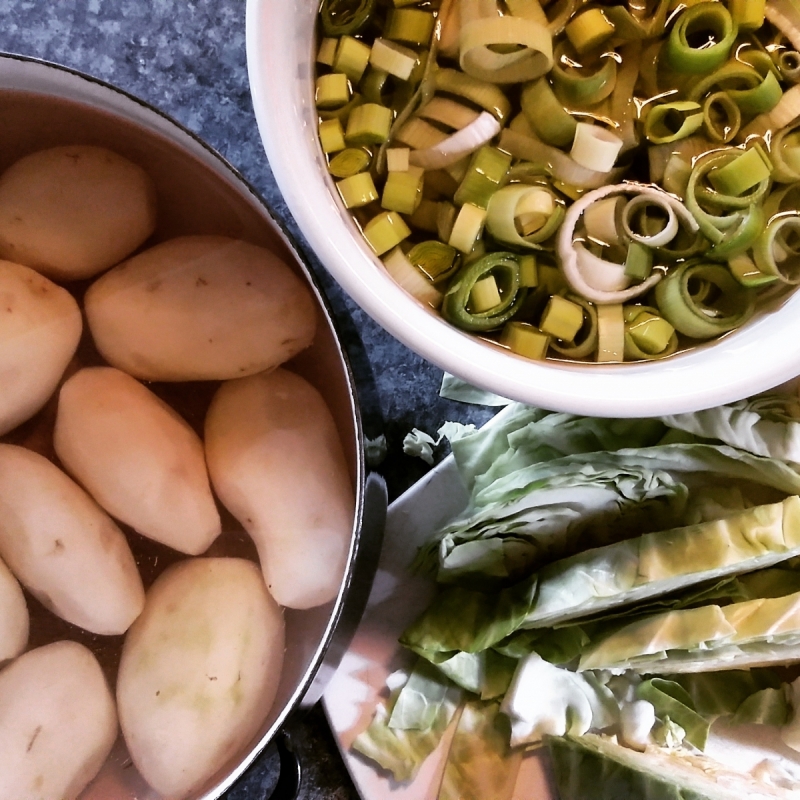
Colcannon (Irish: cál ceannann, meaning “white-headed cabbage”) is one of my signature dishes, I am known for it. Friends wait all year to sample this incredible mash prepared lovingly by me every March, 17th. I’m all for a yummy boiled New England dinner (Corned Beef and Cabbage), but I need to get down to truer Irish roots on St. Patrick’s Day. Chalk it up to my dismay over having unwittingly chosen the “Pagan Persecutor” as my patron saint as a wee Catholic girl and then growing up to be a bit more like one of those “Snakes” Patrick drove out of Ireland, as it turned out. I just need something a little more authentic to celebrate my heritage on that wily day. The soothing and delicious combination of potatoes, allium and cabbage is so damned good there’s even a song to celebrate it!
This is a peasant dish and as such it is one of the most delicious things one can ever eat. I prefer to play most recipes by ear, much as a peasant likely would, but just for my readers I wrote this one down. If you think you might like more or less of any ingredient, by all means please adjust. Keep in mind that Russet or Yukon Gold potatoes are preferred for their high starch content and using Red or other waxy varieties will result in a very sad potato paste. The only thing I insist on for this recipe is to use Irish butter. It must be the “ould sod” that makes it taste one million times better than anything you will find from your local dairy, unless of course, you happen to be lucky enough to be in Ireland!
Colcannon
Ingredients:
13 Large Russet Potatoes
1 Medium Cabbage
2 Large Leeks
1 LB Butter (Use Kerrygold Pure Irish Butter!)
Pint of Cream
Pinch of Nutmeg
Salt and Pepper to taste
Scallions for Garnish
Instructions:
This recipe serves 8-10 people and still leaves some for leftovers which you will surely want. To make a smaller batch simply halve the recipe and use 6 or 7 potatoes instead and so on. You’ll need a mighty big pot for this to go all together in. If you haven’t got one go ahead and use a big baking dish or casserole for the final heat through in the oven, just adjust the time so you don’t dry it out.
Peel and dice (medium size) the potatoes and add to a large pot. Add water to the potatoes making sure they are covered by at least an inch. Add about a teaspoon of salt and bring the water to a boil. Once the water is boiling reduce heat to simmer and cook for approximately 15 to 20 minutes. Diced taters take very little time to cook and you’ll want to be very careful not to overcook these. Check them for doneness often after about 13 minutes. When a fork easily pierces the potato it is ready. Set the potatoes aside to drain thoroughly, but reserve a cup of potato water in the event you may need it for the mash.
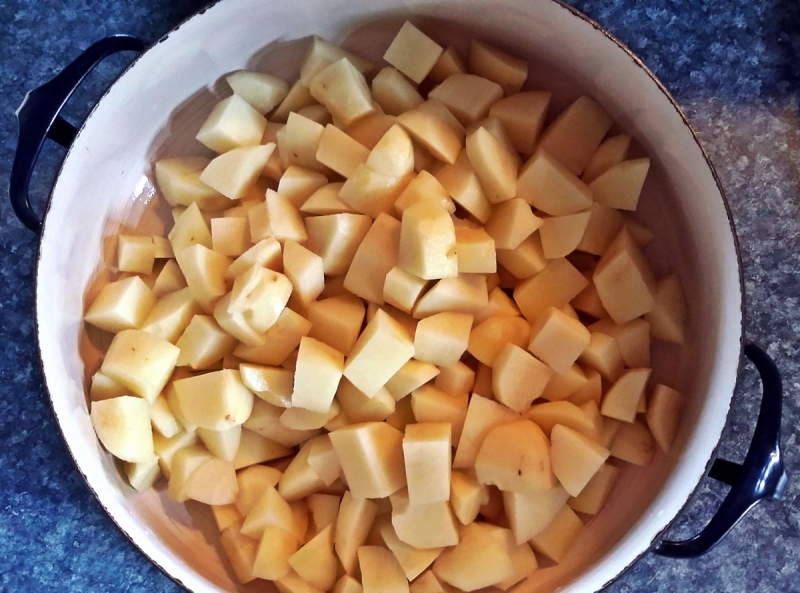
Break the cabbage down by making incisions around the core on the bottom and then holding from the top, slam the core side down onto the countertop. This will remove the pithy core. It may take a few good raps to get it out. Continue by then slicing the cabbage in half and then into 1 inch thick slabs. Boil the cabbage for approximately 8 to 10 minutes. Again take care not to overcook the vegetable. Check for doneness frequently. The texture should be soft, not too crunchy and not mushy. Set the cabbage aside to drain.
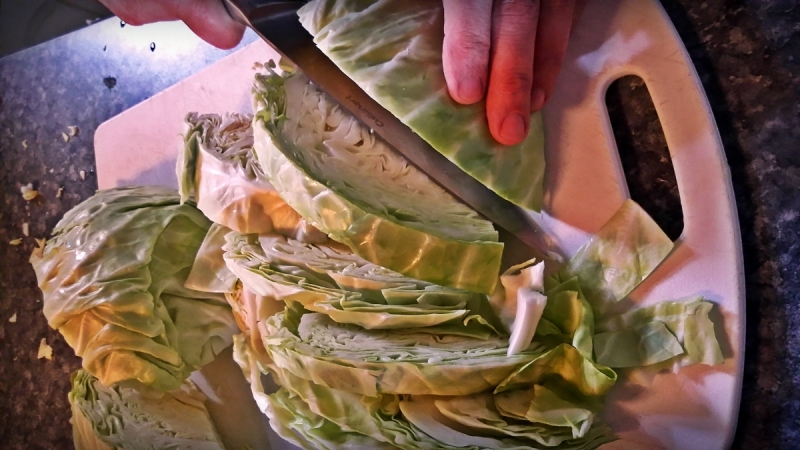
Slice leeks into ¼ inch disks and place into a large bowl with water to clean all of the sand out of them. Separate the rings as much as possible for optimum results. Once the leeks are cleaned and the water is strained they are ready to be cooked. In a large pot add the cream and ⅓ of the butter. Over low heat cook the leeks, cream and butter until the leeks are soft and have released their flavor, about 5 minutes. Stir in a pinch of nutmeg.
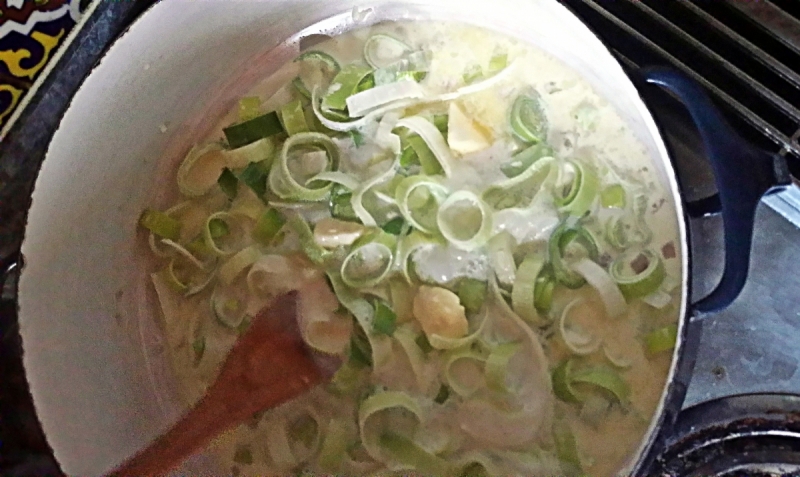
Mash the potatoes in a mixer or by hand. Add ⅓ of the butter as you go and bear in mind these potatoes should be slightly lumpy in the end. Take care not to overwork the potatoes or the texture can turn into something less than delicious. If necessary use the reserved potato water to keep the mash going smoothly, but avoid adding too much because the leek mixture and the cabbage will also be introducing liquid to the potatoes and we’re making a mash not a soup! Slowly add the leek and milk mixture into the potatoes and mix together. Add salt and pepper to taste.
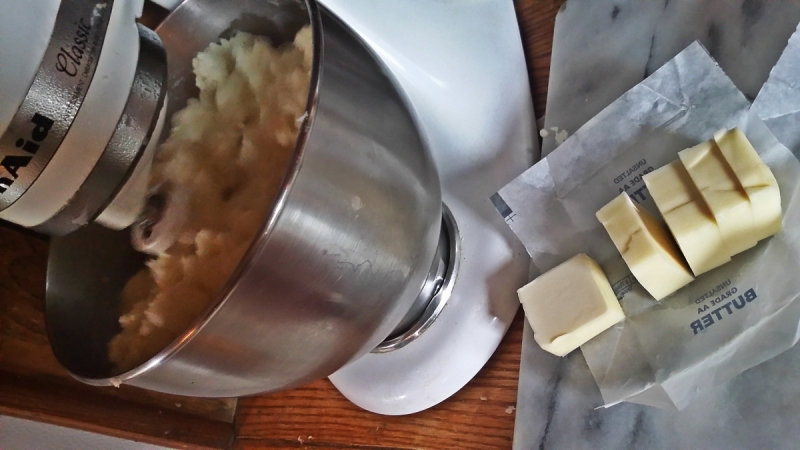
Once the potatoes are adequately mashed and the milk/leek mixture has been incorporated begin to gently fold in the cooked cabbage. Thoroughly mix everything together taking care to preserve the lumpy texture of the potatoes and avoid turning the cabbage to mush. Dot the top of the Colcannon with the remaining ⅓ of butter, cover and put into a 325 degree oven to heat completely through, about 25 minutes depending on how deep your pot is.
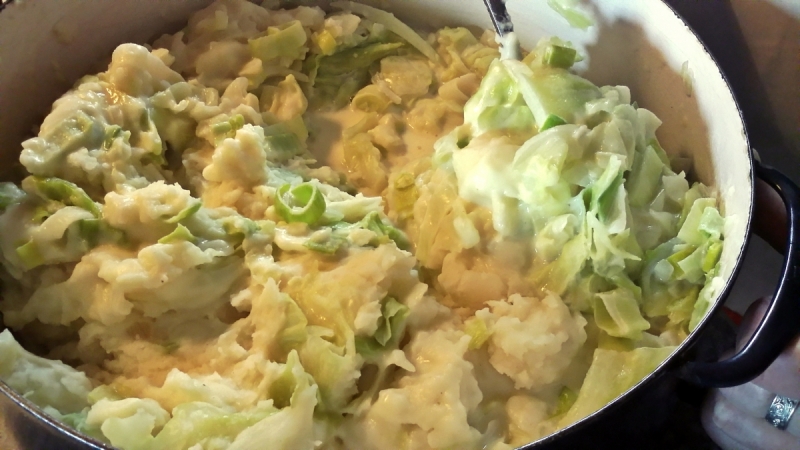
For the garnish: Slice scallions into ⅛ inch slices and add a pat of (more!) butter on top if your little heart desires. This dish is amazing hot out of the oven, cold out of the refrigerator and even reconstituted into potato pancakes.
“Ith leat!” Tuck in! Or as they used to say in Connemara, “Súch Dé oraibh,” the sustenance of God to ye!
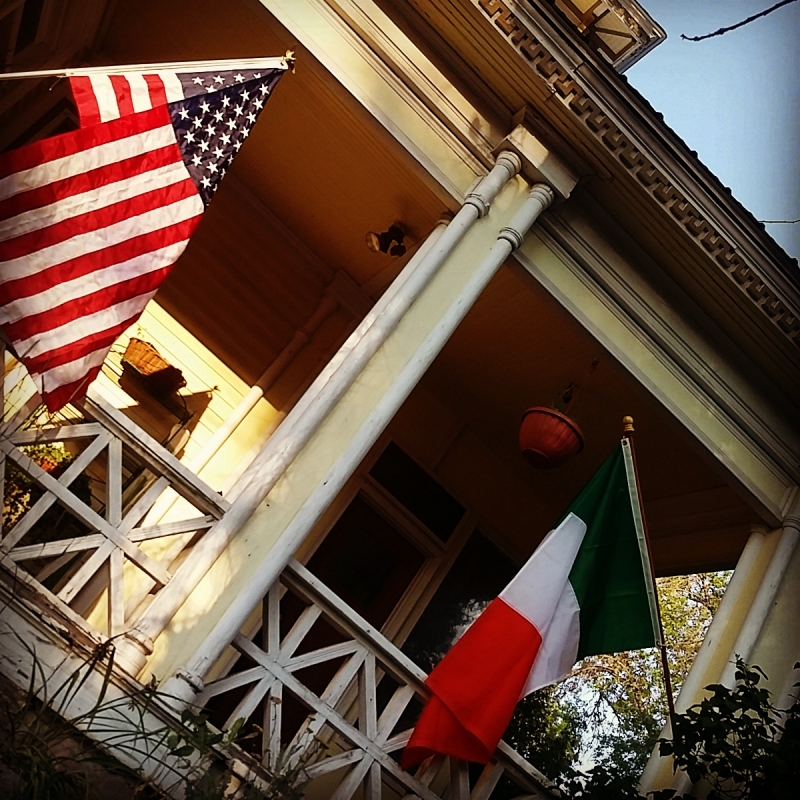
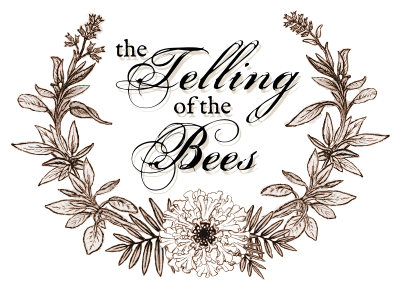

 Prepare a 9” springform pan for baking in a water bath by sealing around the outside with tin foil. Wrap lengthwise using 6 inch wide strips, from ¾ of the way up the side, down around the outer edge and under the bottom of the form. Compact the foil tightly around the bottom seam to keep water from getting in (a little is ok). Grease springform pan with baking spray or butter. Set the greased pan onto the stands in the baking dish you have chosen for the Bain Marie.
Prepare a 9” springform pan for baking in a water bath by sealing around the outside with tin foil. Wrap lengthwise using 6 inch wide strips, from ¾ of the way up the side, down around the outer edge and under the bottom of the form. Compact the foil tightly around the bottom seam to keep water from getting in (a little is ok). Grease springform pan with baking spray or butter. Set the greased pan onto the stands in the baking dish you have chosen for the Bain Marie. Using a kettle or pitcher, carefully pour water into the baking dish until it reaches halfway up the side of the springform pan (be careful to stay below the top edge of the tin foil). Place the baking dish with the springform pan into the oven. This cake needs to bake for about 1 hour and 10 minutes. I recommend setting the timer for 45 minutes to rotate the baking cake halfway through. I start checking for doneness at one hour. The cake will test done, but the extra ten minutes creates a delicious crispy crunch on the top and edges. There is so much butter in this cake that over cooking it is probably impossible. Never underestimate the power of butter! Let cool for at least 20 minutes, but preferably an hour before digging in (which is going to be hard once you know this cake).
Using a kettle or pitcher, carefully pour water into the baking dish until it reaches halfway up the side of the springform pan (be careful to stay below the top edge of the tin foil). Place the baking dish with the springform pan into the oven. This cake needs to bake for about 1 hour and 10 minutes. I recommend setting the timer for 45 minutes to rotate the baking cake halfway through. I start checking for doneness at one hour. The cake will test done, but the extra ten minutes creates a delicious crispy crunch on the top and edges. There is so much butter in this cake that over cooking it is probably impossible. Never underestimate the power of butter! Let cool for at least 20 minutes, but preferably an hour before digging in (which is going to be hard once you know this cake). When the cake has cooled sprinkle the top with confectioners sugar. A standard sprinkle does the job nicely, but you can get a little fancier if you like. A paper doily makes a nice and easy design, for example. Now that the winter holiday season is upon us I think a nice paper snowflake would make the perfect stencil! Serve with a tiny dollop of whipped cream, a little scoop of vanilla ice cream, or on its own. A little goes a very long way with this delectable cake, small slices are the way to go.
When the cake has cooled sprinkle the top with confectioners sugar. A standard sprinkle does the job nicely, but you can get a little fancier if you like. A paper doily makes a nice and easy design, for example. Now that the winter holiday season is upon us I think a nice paper snowflake would make the perfect stencil! Serve with a tiny dollop of whipped cream, a little scoop of vanilla ice cream, or on its own. A little goes a very long way with this delectable cake, small slices are the way to go.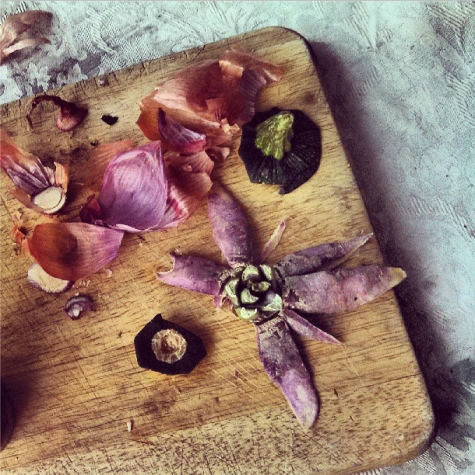
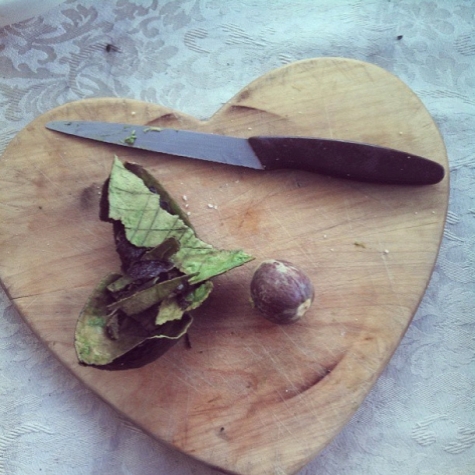
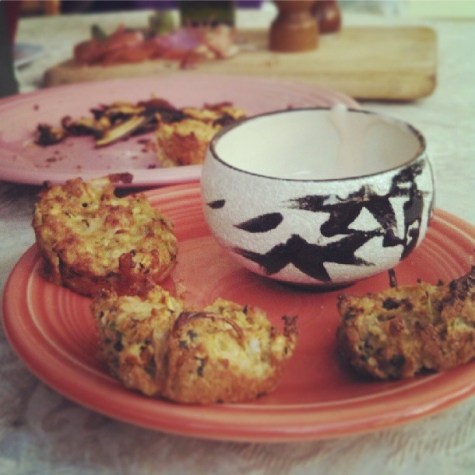
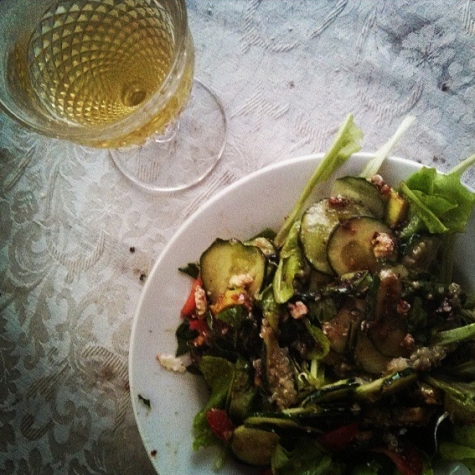
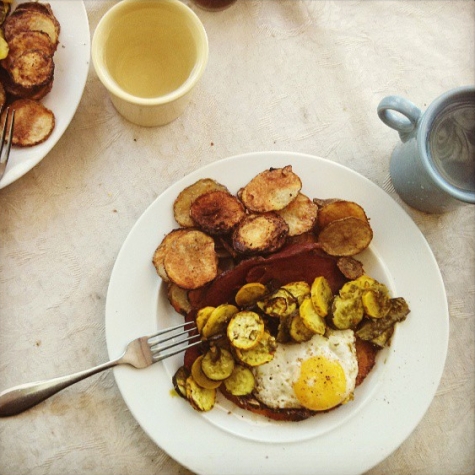
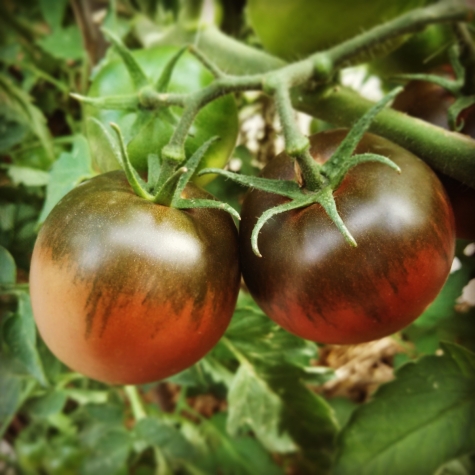 It’s an exciting time to be a food enthusiast in America. The last decade has seen a gorgeous renaissance in our cultural approach to food. In the pacific northwest locally produced, seasonal produce is de rigeuer for any restaurant worth their salt. Home cooks overwhelmingly take the same approach. The reward for waiting until a fruit or vegetable is in season is in the food, itself. Nature cannot be forced and expected to produce results that are the same as when she is on her own schedule. I like ‘once a year foods’ things that can be indulged in because they aren’t consumed daily. The same holds true for seasonal produce. If you’ve ever plucked a ripe apple from a tree and eaten it right there on the spot, you have experienced ‘farm to table’ and you know the difference. It takes some planning to eat seasonally, but it is so worth it. I truly believe it is the little things in life that make it worth living. That’s how I feel when tasting the first blueberries of the season, or slicing into a juicy Black Krim heirloom tomato in the height of summer. Some things really are better than convenience.
It’s an exciting time to be a food enthusiast in America. The last decade has seen a gorgeous renaissance in our cultural approach to food. In the pacific northwest locally produced, seasonal produce is de rigeuer for any restaurant worth their salt. Home cooks overwhelmingly take the same approach. The reward for waiting until a fruit or vegetable is in season is in the food, itself. Nature cannot be forced and expected to produce results that are the same as when she is on her own schedule. I like ‘once a year foods’ things that can be indulged in because they aren’t consumed daily. The same holds true for seasonal produce. If you’ve ever plucked a ripe apple from a tree and eaten it right there on the spot, you have experienced ‘farm to table’ and you know the difference. It takes some planning to eat seasonally, but it is so worth it. I truly believe it is the little things in life that make it worth living. That’s how I feel when tasting the first blueberries of the season, or slicing into a juicy Black Krim heirloom tomato in the height of summer. Some things really are better than convenience.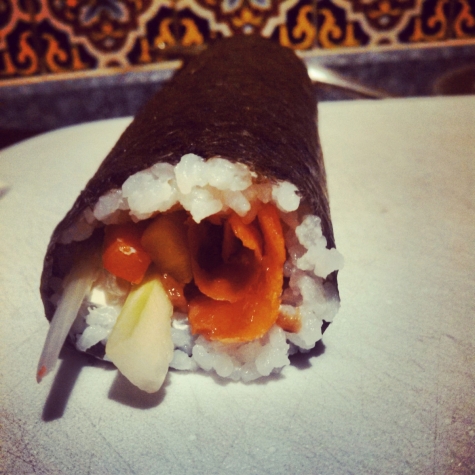 I’ve been cooking now for nearly 20 years and I know what I like. I have little tricks and tips picked up along the way and I like to marry divergent techniques and tastes. I’ll just let you in on one of my my ‘secret ingredients.’ Nothing packs the umami punch like umeboshi plum vinegar. It’s my go to for dressing salads and vegetable dishes. A dash will set your hollandaise just right. I’ll even garnish soup with it. I love ume boshi. The same is true for capers, often overlooked, but always welcome. Anchovies, too are a fantastic garnish. With all of these things its the flavor enhancing quality I am after. They are a little unusual and that is how these ‘secret ingredients’ set my cuisine apart. I strongly encourage all serious home cooks to develop your own arsenal of flavor. This is what separates the amateurs from the heavy hitters. Feel free to borrow inspiration from Umeboshi, you’ll be glad you did.
I’ve been cooking now for nearly 20 years and I know what I like. I have little tricks and tips picked up along the way and I like to marry divergent techniques and tastes. I’ll just let you in on one of my my ‘secret ingredients.’ Nothing packs the umami punch like umeboshi plum vinegar. It’s my go to for dressing salads and vegetable dishes. A dash will set your hollandaise just right. I’ll even garnish soup with it. I love ume boshi. The same is true for capers, often overlooked, but always welcome. Anchovies, too are a fantastic garnish. With all of these things its the flavor enhancing quality I am after. They are a little unusual and that is how these ‘secret ingredients’ set my cuisine apart. I strongly encourage all serious home cooks to develop your own arsenal of flavor. This is what separates the amateurs from the heavy hitters. Feel free to borrow inspiration from Umeboshi, you’ll be glad you did.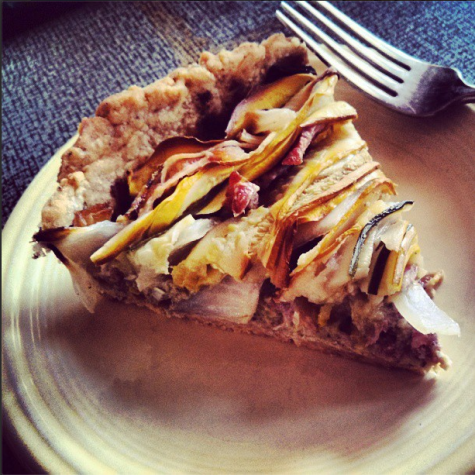 I had an interesting revelation recently, the kind that is just so obvious one can hardly believe something so simple had been unnoticed by them for so long. After Downton and Sherlock had concluded I sat watching a travel program on Public Television. Rick Steves and I were transported to Provençal France. Naturally food is an important feature on a program about Provence. I’ve always been drawn to Mediterranean cuisine and I even edited and published a cookbook on Italian food in 2012. I had never made a study of what qualifies as Provencal cuisine, but after learning about it on the program I realized that much of my natural cooking instinct seems to be informed by this region. How fascinating! I was brought up largely on continental fare, and I do enjoy a rich sauce occasionally, but as with some of the heavier Italian sauces, there is a limit to how much one can and should consume. The Provençal style of French cooking speaks so directly to my regional, local, seasonal approach, as well as to my predilection to feature vegetables predominantly in my meals. Now I have something new to study and incorporate into my repertoire.
I had an interesting revelation recently, the kind that is just so obvious one can hardly believe something so simple had been unnoticed by them for so long. After Downton and Sherlock had concluded I sat watching a travel program on Public Television. Rick Steves and I were transported to Provençal France. Naturally food is an important feature on a program about Provence. I’ve always been drawn to Mediterranean cuisine and I even edited and published a cookbook on Italian food in 2012. I had never made a study of what qualifies as Provencal cuisine, but after learning about it on the program I realized that much of my natural cooking instinct seems to be informed by this region. How fascinating! I was brought up largely on continental fare, and I do enjoy a rich sauce occasionally, but as with some of the heavier Italian sauces, there is a limit to how much one can and should consume. The Provençal style of French cooking speaks so directly to my regional, local, seasonal approach, as well as to my predilection to feature vegetables predominantly in my meals. Now I have something new to study and incorporate into my repertoire.